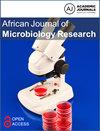Survey on efficiency of inoculation methods of Pseudomonas fluorescens on growth and yield of Thymus kotschyanus
引用次数: 0
Abstract
Thyme is one of the most important medicinal plants in wild rangeland in Iran that has lots of benefits. Pseudomonas flourescence is one of the effective plant growth promoting bacteria (PGPR) as a bioinoculant for medicinal plants. This study aims to survey three inoculation techniques with PGPR on growth and oil content in Thymus kotschyanus for organic cultivation. For this research, an experiment was conducted in Randomized Complete Block Design at Research Institute Forest and Rangelands, Tehran, Iran, with four treatments and three replications. In the first method, thyme seed was treated in liquid bacterial suspension for 3 h, in the second method bacterial suspension injected around the root before cultivation in farm and in the third method both seed and root have been treated by the bacterial suspension. In all three methods of inoculation of P. fluorescence, an increase in growth and the amount of essential oil was determined. The highest amount of root volume (30 mL) compared to the control (15 mL) was significant at the level of P=0.05 and the highest amount of essential oil (1.74%) was obtained by using the third inoculation method. It could be concluded that the microbial inoculation method has a great influence on the yield of T. kotschyanus and bacterial inoculation of seeds and roots had a greater effect, rather than inoculated separately for organic cultivation.荧光假单胞菌接种方法对胸腺生长和产量影响的研究
百里香是伊朗野生牧场中最重要的药用植物之一,有很多好处。荧光假单胞菌是一种有效的植物生长促进菌(PGPR),是药用植物的生物接种剂。本研究旨在调查三种PGPR接种技术对有机栽培百里香生长和含油量的影响。在这项研究中,在伊朗德黑兰森林和牧场研究所进行了一项随机完全区块设计实验,共有四个处理和三个重复。在第一种方法中,百里香种子在液体细菌悬浮液中处理3小时,在第二种方法中在农场栽培前在根部周围注射细菌悬浮液,在第三种方法中种子和根部都用细菌悬浮液处理。在荧光假单胞菌的所有三种接种方法中,都测定了生长的增加和精油的量。与对照组(15mL)相比,根体积的最高量(30mL)在P=0.05的水平上是显著的,并且通过使用第三种接种方法获得了最高量的精油(1.74%)。结果表明,微生物接种方法对小白菜产量影响较大,种子和根系的细菌接种效果较大,而不是单独接种进行有机栽培。
本文章由计算机程序翻译,如有差异,请以英文原文为准。
求助全文
约1分钟内获得全文
求助全文

 求助内容:
求助内容: 应助结果提醒方式:
应助结果提醒方式:


